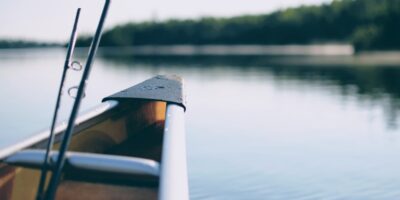How to Catch Fish in the Winter
How to Catch Fish in the Winter
Winter fishing is a unique and rewarding experience. The cold weather changes the behavior of fish, making it essential to adapt your techniques.
Understanding Fish Behavior in Winter
In cold waters, fish metabolism slows down. They become less active and often stay in deeper waters where the temperature is more stable. Fish movements are minimal, and they tend to cluster around structures. Finding these clusters is key to successful winter fishing.
Choosing the Right Location
Focus on deep waters and areas with underwater structures such as rocks, fallen trees, or ledges. These provide shelter and a potential food source. Use a fish finder to locate schools of fish quickly. When fishing on ice, drill multiple holes to test different depths and spots.
Preparing Your Gear
Proper gear is crucial for winter fishing. Cold temperatures can damage your equipment if not chosen wisely. Here are essential items to consider:
- Rod and Reel: A medium-action rod is versatile for various fish sizes. Ensure your reel has good anti-freeze properties.
- Line: Use a braided line with a fluorocarbon leader. Braided lines perform well in cold weather, and fluorocarbon is less visible underwater.
- Bait and Lures: Opt for live bait such as minnows or worms. Artificial lures resembling small prey can also be effective. Slow movements are essential.
- Clothing: Dress in layers to stay warm. Waterproof gear is crucial. Remember to wear gloves that allow finger dexterity.
Rod and Reel Selection
Winter fishing requires a reliable rod and reel combination. Choose a medium-action rod. It provides the sensitivity needed to detect subtle bites. Ensure your reel functions smoothly in cold conditions. Look for models with anti-freeze lubrication. These maintain performance when temperatures drop. Ice fishing requires a shorter rod, usually between 24 to 36 inches.
Choosing the Right Line
Use a braided line as your main fishing line. It has low stretch and excellent sensitivity. Add a fluorocarbon leader. This type of leader is nearly invisible to fish, increasing your chances of a bite. Check the line frequently for nicks or abrasions. Cold weather can make it brittle, leading to breaks. For ice fishing, a test line between 2 to 8 pounds is typical, depending on the target fish.
Effective Bait and Lures
Live bait such as minnows or worms is highly effective in winter. Fish are more likely to strike at natural prey. If using artificial lures, choose small, subtle options like jigs or soft plastics. Mimic the slow, lethargic movements of fish in cold water. Tip your lures with live bait for added attraction. Try different colors and sizes to see what works best on a given day.
Dressing for Success
Appropriate clothing is vital for comfort and safety. Wear multiple layers to retain body heat. Start with a moisture-wicking base layer. Add insulating layers, and top it off with a waterproof outer layer. Choose boots rated for sub-zero temperatures, and always wear a hat. Keeping your head warm helps maintain overall body temperature. Gloves should be warm yet flexible, allowing easy handling of equipment.
Techniques for Winter Fishing
Ice Fishing
Ice fishing offers a unique experience. Start by drilling holes with an ice auger. Portable shelters can provide warmth and protect from wind. Use an ice fishing rod and reel. Drop your bait or lure into the hole and jig slowly. Patience is crucial.
Open Water Fishing
Open water fishing in winter requires different strategies. Seek out deeper waters where fish congregate. Use a boat with a reliable heating system. Trolling slowly can be effective. Focus on using natural baits and maintaining a steady, slow pace.
Float Fishing
Float fishing remains effective in winter. Cast your line near structures or deep pools. Adjust the float depth to the level where fish are likely to be. Keep an eye on the float for any subtle movements. Strike gently to avoid spooking the fish.
Drifting
Drifting is another method. Use the current to move your bait slowly through the water. This technique works well in rivers and streams. Position yourself upstream and allow the bait to drift naturally with the current. Watch for any resistance or changes in the line.
Safety Tips for Winter Fishing
Winter conditions can be harsh and unpredictable. Follow these safety tips to ensure a safe and enjoyable fishing trip:
- Check the Weather: Always check the weather forecast before heading out. Avoid fishing during severe conditions.
- Dress Appropriately: Wear layers and insulated clothing. Hypothermia is a real risk.
- Prepare Your Gear: Ensure all equipment is in good working order. Bring extra line, hooks, and other essentials.
- Inform Others: Let someone know your fishing location and expected return time.
- Stay Hydrated: Drink plenty of fluids. Dehydration can occur quickly in cold conditions.
- Avoid Alcohol: Alcohol lowers body temperature and impairs judgment. Save it for after your fishing trip.
Checking Ice Thickness
If ice fishing, check the ice thickness before venturing out. A minimum of 4 inches is recommended for walking, and at least 12 inches for vehicles. Carry ice picks and a rope for safety. Ice conditions can vary, so regularly check the thickness as you move.
Using Safety Gear
Additional safety gear includes a life vest and a first-aid kit. Carry a whistle for emergency situations. A small propane heater can provide warmth without the risk of fire.
Fishing with a Buddy
Whenever possible, fish with a companion. Not only is it more enjoyable, but it also provides an extra layer of safety. You can assist each other in case of an emergency and share responsibilities.
Target Species and Their Behavior in Winter
Perch
Perch are a common winter target. They congregate in large schools near the bottom. Use small jigs or live bait. Perch are not aggressive in winter, so subtle movements are key.
Trout
Trout remain active throughout winter. Look for them in deeper pools or near underwater springs. Small spinners or worms can be effective. Trout are cautious and require a delicate approach.
Pike
Pike are top predators and hunt for smaller fish. They are often found near structures. Use large, flashy lures to attract them. Strong, durable gear is essential due to their size and strength.
Walleye
Walleye prefer low light conditions. Dawn and dusk are prime times. They stay near the bottom and around structures. Live minnows or jigging spoons work well.
Bluegill
Bluegills are found in shallow waters with vegetation. They are more active during the warmer parts of the day. Small jigs tipped with worms or wax worms are effective. Be patient, as they can be timid.
Tips for Ice Fishing
- Drill Multiple Holes: Increases chances of finding active fish.
- Use an Ice Shelter: Keeps you warm and focused.
- Light Line: Increases sensitivity to bites.
- Mobile Strategy: Move frequently to find fish clusters.
- Pre-Bait Holes: Attracts fish to your location.
Advantages of Winter Fishing
Winter fishing provides solitude and less competition. Scenery is pristine and quiet. Fish are often concentrated, making them easier to locate. Enjoy diverse species and the challenge of cold-weather angling.
Solitude
Few anglers venture out in winter. You can enjoy peaceful and uninterrupted fishing. It’s a great time to reflect and connect with nature.
Scenic Beauty
Winter landscapes are stunning. Snow-covered trees and icy waters create a serene environment. Bring a camera to capture the beauty.
Concentrated Fish Populations
Fish gather in specific areas during winter. Once you locate them, the action can be consistent. This makes winter a productive time for fishing.
Diverse Species
Many species are active during winter. Experiment with different techniques to catch a variety of fish. This can improve your overall fishing skills.
Challenge
Fishing in cold conditions requires adaptability. Overcoming these challenges makes the experience more rewarding. Skill and perseverance are essential.



Subscribe for Updates
Get the latest articles delivered to your inbox.
We respect your privacy. Unsubscribe anytime.